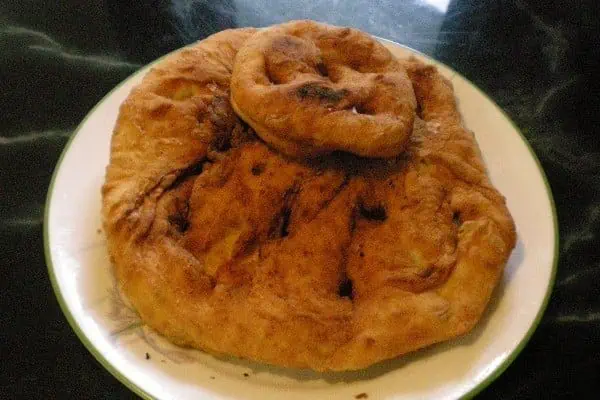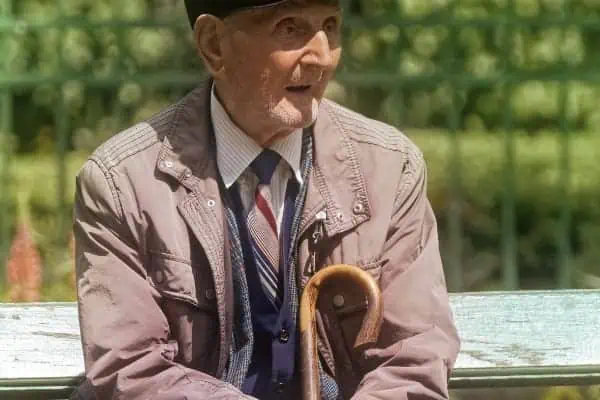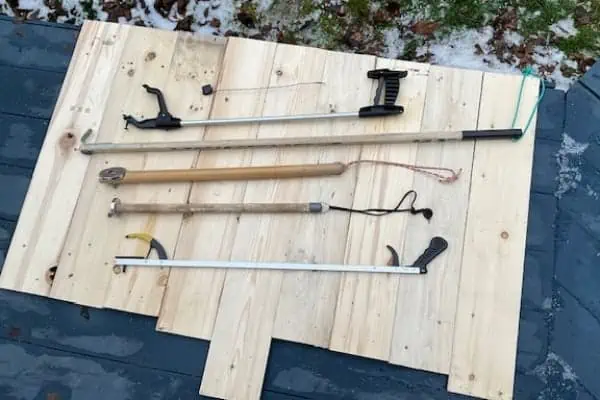When you have 300-500 lbs of moose or bison in your freezer, you really need to have everyone in the family just love the first plateful that you serve them.
If you prepare properly as set out below, you increase the chances of that first meal being so delicious that it causes them to clamour for more.
Meat care starts even before hunting season.
That’s the time you sight-in and practise with your rifle, sharpen your knives, learn as best you can field dressing techniques from DVDs, Google and handouts such as “Field Care of Game” and “Boning Out Techniques” offered by the department of Environment.
It is also the time that you put together your equipment for field dressing.
The amount of equipment will of course be affected by the species you intend to hunt. For example, a sheep hunt is a total back-packing event, so less (the absolute bare minimum) is carried, as compared to a boat, truck, ATV moose or bison hunt, where much more equipment can be brought along.
On a sheep hunt, a few cheesecloth bags and a sharp knife may be all you take.
A river hunt for moose allows more equipment. The size of the task demands more, and it makes the job more manageable.
In addition to a sharp knife and cheesecloth bags (you’ll need a lot), you’ll want lengths of good rope, two or three 8’x10′ tarps, an axe or saw, a come-along and at least a headlamp.
Many moose have been field dressed by firelight, but a headlamp or lantern is better.
Having adequate clothing for the conditions is a part of survival, but it also affects meat care, as a cold or wet hunter will take shortcuts and hurry through a project that is better done thoroughly and properly.
The flavour of wild game meat is affected by how the animal dies.
A “quick-clean” kill where the animal does not suffer, stagger around wounded or escape temporarily is the ideal situation. A wounded animal goes into shock and chemistry changes within the muscles, causing a change in flavour.
A rutting moose often has a stronger flavour than a moose taken outside of the rut. Moose in the rut scrape out rut wallows, urinating in them and then rolling around covering themselves with sand and urine.
If this gets on the meat, it will spoil the flavour. Care must be exercised removing the hide to maintain meat quality.
Cool, clean and dry are the buzz words of meat care.
The animal should be field dressed promptly to allow it to cool down. The pieces should be placed on tarps, the flesh side of the hide, or into cheesecloth bags to keep it clean.
The wrapped pieces should then be kept dry by covering them with tarps with a space between the tarps and meat for air circulation.
Keep the sun off the meat. If possible, hang the meat on a meat pole or sturdy limbs. If there is no way to hang it, spread a mat of willow boughs on the ground and lay the meat on top.
Turn the pieces over to allow thorough cooling. The cheesecloth bags are to keep the flies off the meat but the meat should be checked often to be sure that no flies have managed to lay eggs. As we all know, these become maggots in a very short time.
Cover (tarp) the meat for transport to keep mud, rain, exhaust gases, etc., away from the meat.
I do not hang meat any longer than it takes to butcher it. I do the fronts, neck, ribs or rib slabs, backstrap and tenderloins as soon as I get home. All these except the tenderloins and backstrap are for burger, sausage, stews, etc., and do not need aging.
The tenderloins and backstrap I age in the fridge by thawing it a number of days prior to serving it and ziploc bagging it with a marinade, turning over and kneading it each time I open the fridge.
Hanging leads to a dried crust forming on the outside of the cut. This is inedible and wasteful as it is trimmed off and discarded.
The hinds hang only until I finish the fronts. This is usually just two to three days, so some crust does form, but it is thinner than it would be if hung longer.
I do the same “aging in the fridge” routine with the steaks and roasts from the hinds as I described for the loins and backstraps.
The “aged for 28 days” steaks you’ve had at choice restaurants are aged in a totally controlled temperature and humidity environment. Hanging in your garage, basement or carport does not provide the same controlled environment.
After just a few days the process becomes counter-productive, because you are wasting too much meat through the surface crust thickening to the point where thinner pieces are totally dried out and wasted.
Lots of old-time stories about meat care and flavour enhancement are just old stories with no basis in truth or fact. Try it the way I’ve suggested and you’ll have more meat and more flavour.
Bon appétit!




